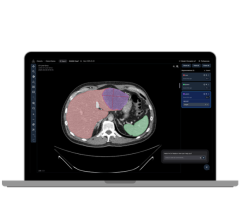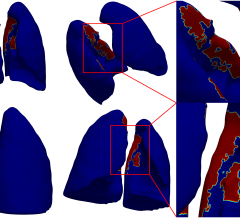April 2, 2018 — Results from a recent prospective trial found the Wide Area Transepithelial Sampling with 3D Tissue Analysis (WATS3D) device increases the detection of both Barrett’s esophagus and esophageal dysplasia by more than 80 percent. Study results from the multicenter trial of more than 4,000 patients were published in the latest issue of United European Gastroenterology Journal and featured in the American Society for Gastrointestinal Endoscopy (ASGE)’s Scope Tech Talk video series.
Esophageal adenocarcinoma, one of the most fatal and fastest growing cancers in the U.S., can be prevented if detected at a precancerous stage. Gastroenterologists perform more than 5 million upper endoscopies each year on patients with chronic heartburn and Barrett's esophagus in an effort to find these precancerous cells before they can progress to cancer. A major problem with this strategy is that prior to the availability of WATS3D, endoscopists had to rely on taking small random forceps biopsies at 1-2 cm intervals to find these abnormal cells, leaving more than 96 percent of the endoscopically suspect area completely untested.
With the availability of WATS3D, doctors are able to rapidly collect a sample from a much larger surface area of the esophagus. By combining a larger sampling area with 3-D imaging and cytopathology, WATS3D has far reaching implications for protecting a patient’s health, according to CDx Diagnostics, the makers of the solution. If precancerous cells are present, they can now be easily detected and removed or destroyed before they become cancerous – essentially pre-empting esophageal cancer.
The multicenter prospective trial was conducted at 25 community-based gastrointestinal (GI) centers across the United States. In the study, 4,203 patients were tested for esophageal disease. The findings show that with the inclusion of WATS3D overall detection of Barrett’s increased by 83 percent, while the detection of dysplasia increased by 88 percent. The study concludes that the sampling error can be improved dramatically with use of this adjunctive technique.
“These data confirm findings from previous clinical trials showing that WATS3D biopsy significantly increases the detection rate of Barrett's Esophagus as well as precancerous changes in esophageal tissue in GERD patients," said Seth Gross, M.D., lead investigator. “Ultimately, WATS3D revolutionary technology is making esophageal cancer a potentially preventable disease.”
“This study exhibits the fundamental limitation with standard forceps biopsies in the setting of Barrett’s diagnosis and surveillance and sheds light on the 'sampling error' phenomenon that may provide false reassurance to both patients and GI professionals,” said Vivek Kaul, M.D., Segal-Watson Professor of Medicine and chief of the Division of Gastroenterology and Hepatology at the University of Rochester Medical Center. “These results clearly demonstrate that the wide-area sampling and expert analysis aspects of WATS3D technology can effectively help fill the information gap in diagnosis and surveillance for patients with Barrett’s esophagus.”
For more information: www.wats3d.com


 December 01, 2025
December 01, 2025 









